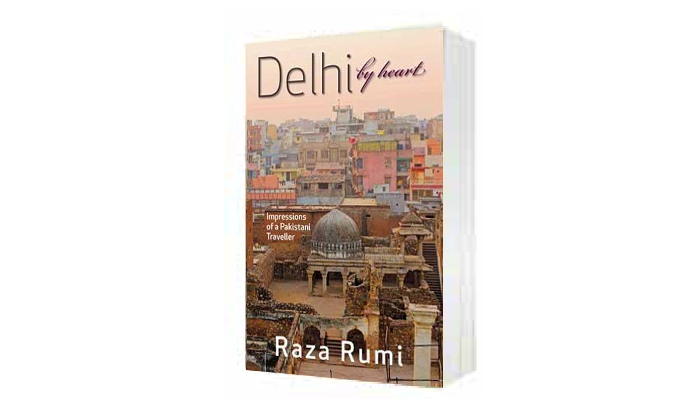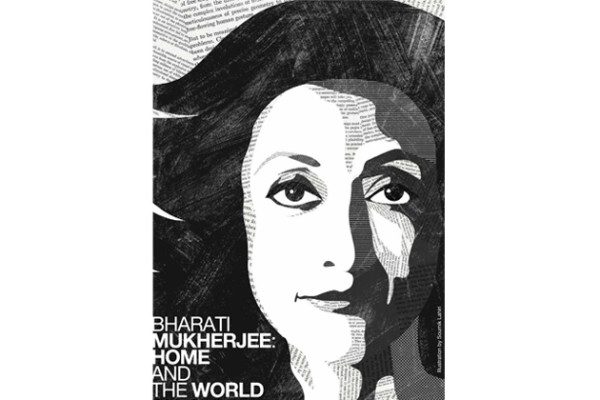Delhi, with the numerous Delhi-s existing within it, is necessarily an elusive city. Few cities have been sites of such untiring human traffic through the ages and as William Dalrymple reminded us in City Of Djinns, the beauty of Delhi lies in its ability to embody diverse eras, entire peoples and catastrophes simultaneously: at any given moment, one may choose any bit of history from among this vast co-existence for examination, enquiry. But if you wish to document the stories that the city tells you, you can’t risk getting lost in them – and it is this fine balance that Raza Rumi’s debut book Delhi By Heart fails to strike.
Delhi By Heart: Impressions of a Pakistani Traveller is an account of how Rumi – a visitor from across the border who has grown up with as many tales about the ‘enemy’ India as literature that emphasize the inextricability of Pakistan’s culture from that of the same ‘enemy’— discovered Delhi in his own way. The realisation that his exploration of the city leads him to is clear from the start –India and Pakistan share cultural roots that go back so deep into the past that to deny them would require one to re-write the very history of the subcontinent. But the author bites off way more than he can chew – you have musings on everything from the ancient city of Indraprastha, the Mughal era, Afghan invaders, the British Rule, Partition, right up to the new urban villages like Hauz Khas. But in the absence of a set methodology, he is left struggling to weave together these enormous chunks of history into a convincing narrative of his own.
The result is an array of chapters that read somewhere between Wikipedia articles and unedited diary entries. There are no memorable characters peppering Delhi By Heart like Dr. Jaffery or Balvinder Singh from City of Djinns – a book that one inevitably recalls time and again while reading Rumi – nor do we find a coherent analysis of the multiple issues that he dabbles with – communalism, urban development vis-à-vis heritage preservation, textbook nationalism in post-Independence India and Pakistan, the fate of Urdu literature, Sufism etc. This failure is especially disappointing since occasionally one does come across poignant moments in the book that are left unexplored. For instance a short paragraph tells us how “the meat-fest that defines the idea of eating in Pakistan” is in fact a misplaced notion that does not take into account the fact that culinary preferences vary across classes, regions and urban/rural divides within Pakistan. But we never hear more about it. Instead, the subject of communal tensions in modern India and Indo-Pak hostilities remains with us throughout the book, reiterated in different ways but with little evolution of perspective on his part: Rumi’s nostalgic-but-with-a-glimmer-of-hope tone continues till the last page and the reader’s wish to actually discover how an ordinary Pakistani would approach Delhi in his mind, beyond emotional reactions and vague dreams of a communally harmonious future – sadly, remain unfulfilled.
Neither do his encounters with personalities like Khushwant Singh and Qurratulain Hyder arouse much interest. He is weighed down by the responsibility of underlining how deeply secular their works and aspirations are – a commendable task in itself except that he does this solely through short quotes and reported conversations, following them up with little analysis of his own and refusing to explore almost anything else beyond it. This refusal to look a little further than his immediate reactions to the city comes close to being jarring at times. For instance, Rumi laments how the alley leading to the Ghalib Academy “is thronged by Ghalib-illiterates – unemployed boys, burqa-clad beggars and hundreds of pilgrims on their way to the Hazrat Nizamuddin dargah”, and one cringes to hear the entirety of these people’s struggles being ignored in favour of the reductive question of whether or not they have read Ghalib. His affectionate musings on the city’s past thus repeatedly fails to forge meaningful relationships with the present bustling capital – the dilemma of ‘heritage vs. livelihood’ is merely voiced without being addressed adequately. And it is this shortcoming that accounts for much of the sense of incompleteness that surrounds the book – unsurprising, considering that any writer writing about Delhi cannot escape its difficult relation with its past if he has to wholly grasp the realities of the city and its increasingly commercialized spaces.
Delhi By Heart fails to carve a niche for itself among the numerous chronicles of Delhi – many of which Rumi lists in the last chapter of his book – that have left their mark on the literary life of the city. Its attempt to fully tell Delhi’s story – any story, in fact, of any city that today’s Delhi encompasses – proves to be woefully deficient, despite the novelty of the traveller’s position and all the promise that it held.














